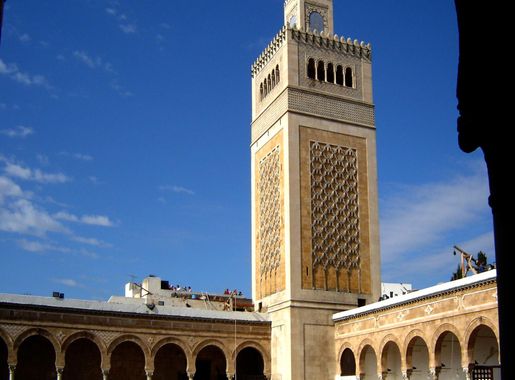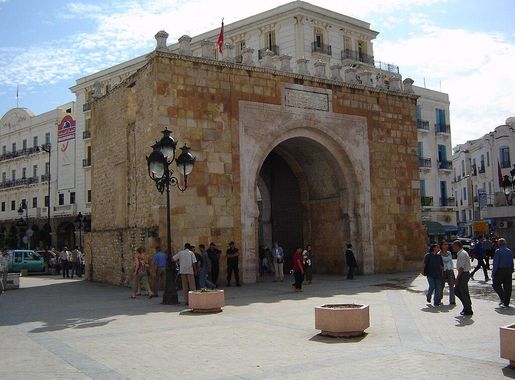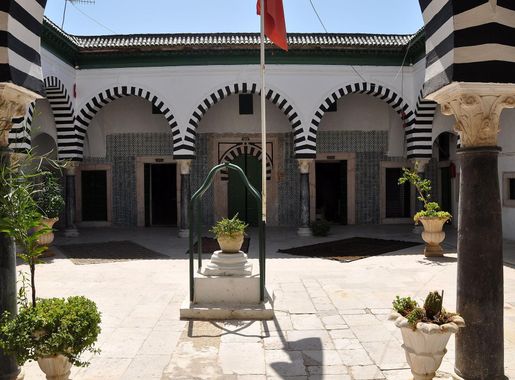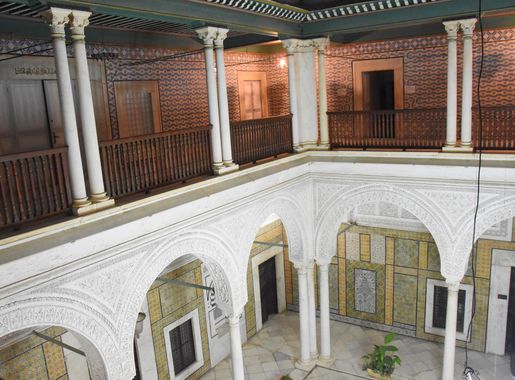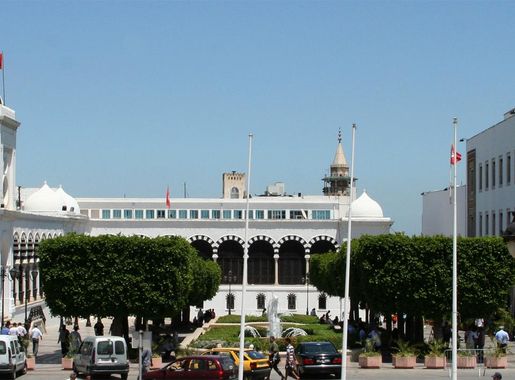
Exploring the Enigmatic Medina of Tunis
Discover the historic Medina of Tunis, a UNESCO World Heritage site filled with ancient architecture, bustling souks, and rich cultural heritage in the heart of Tunisia.
The Medina of Tunis, a UNESCO World Heritage site, is a captivating labyrinth of narrow streets, ancient buildings, and bustling souks. Dating back to the 7th century, this historic quarter offers a glimpse into the rich cultural tapestry of Tunisia. As you wander through the Medina, you'll discover a blend of Islamic architecture, vibrant markets, and hidden courtyards that transport you back in time. Begin your journey at the grand Zitouna Mosque, the spiritual heart of the Medina. This stunning structure, with its intricate designs and towering minaret, is a testament to the region's religious heritage. From here, meander through the winding alleys, where you'll find a plethora of shops selling traditional crafts, spices, and textiles. The souks are a sensory delight, filled with the sounds of haggling vendors and the aroma of exotic spices. Don't miss the Dar Hussein Palace, a prime example of Ottoman architecture, now home to the National Heritage Institute. Another must-see is the Tourbet El Bey, the mausoleum of the Husainid dynasty, adorned with beautiful tile work and carvings. For a taste of local culture, visit one of the many hammams or traditional bathhouses, where you can relax and rejuvenate after a day of exploration. In addition to its architectural wonders, the Medina is also a hub for culinary delights. Indulge in local delicacies such as brik (a savory pastry), couscous, and mint tea at one of the many cafes and eateries. The Medina of Tunis is not just a place to visit; it's an experience that immerses you in the history, culture, and soul of Tunisia.
Local tips in Medina of Tunis
- Wear comfortable shoes as the narrow streets are best explored on foot.
- Visit early in the morning to avoid the crowds and heat.
- Carry cash, as many small vendors do not accept credit cards.
- Respect local customs and dress modestly, especially when visiting religious sites.
- Hire a local guide for a more in-depth understanding of the Medina's history and significance.
Exploring the Enigmatic Medina of Tunis
The Medina of Tunis, a UNESCO World Heritage site, is a captivating labyrinth of narrow streets, ancient buildings, and bustling souks. Dating back to the 7th century, this historic quarter offers a glimpse into the rich cultural tapestry of Tunisia. As you wander through the Medina, you'll discover a blend of Islamic architecture, vibrant markets, and hidden courtyards that transport you back in time. Begin your journey at the grand Zitouna Mosque, the spiritual heart of the Medina. This stunning structure, with its intricate designs and towering minaret, is a testament to the region's religious heritage. From here, meander through the winding alleys, where you'll find a plethora of shops selling traditional crafts, spices, and textiles. The souks are a sensory delight, filled with the sounds of haggling vendors and the aroma of exotic spices. Don't miss the Dar Hussein Palace, a prime example of Ottoman architecture, now home to the National Heritage Institute. Another must-see is the Tourbet El Bey, the mausoleum of the Husainid dynasty, adorned with beautiful tile work and carvings. For a taste of local culture, visit one of the many hammams or traditional bathhouses, where you can relax and rejuvenate after a day of exploration. In addition to its architectural wonders, the Medina is also a hub for culinary delights. Indulge in local delicacies such as brik (a savory pastry), couscous, and mint tea at one of the many cafes and eateries. The Medina of Tunis is not just a place to visit; it's an experience that immerses you in the history, culture, and soul of Tunisia.
Iconic landmarks you can’t miss
Bab al-Bhar
Discover the vibrant Bab al-Bhar, a historic landmark that serves as the gateway to the rich cultural tapestry of Tunis and its bustling Medina.
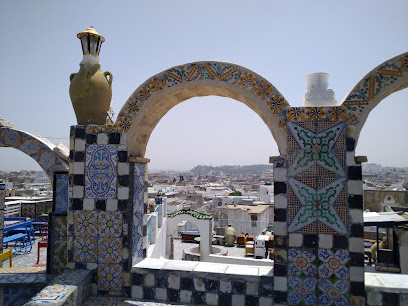
Victory Square
Experience the vibrant culture and history at Victory Square in Tunis, where local flavors and rich traditions come together in a picturesque setting.
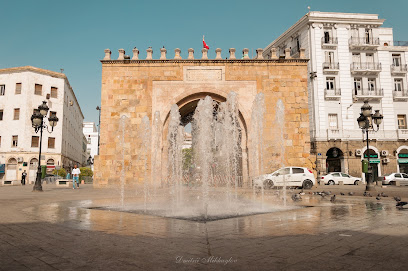
Kasbah Square
Discover the vibrant history and cultural significance of Kasbah Square, a historical landmark in the heart of Tunis, rich with stories of the past.
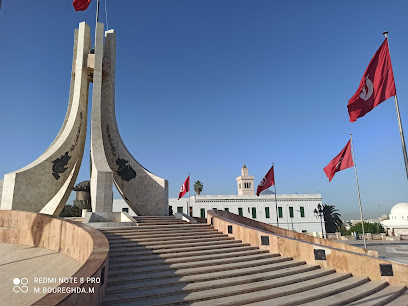
Les toits de la médina Tunis
Explore the stunning historical landmark of Les Toits de la Médina Tunis, where rich culture meets breathtaking architecture.

Dar Lasram
Discover the architectural beauty and rich history of Dar Lasram, a must-visit historical landmark in the heart of Tunis's Medina.
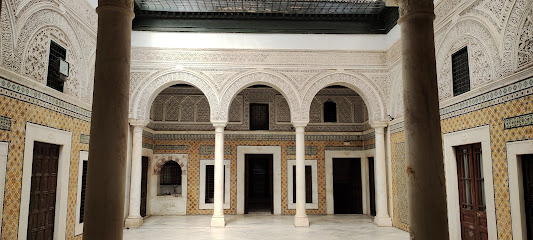
La Médina Antique De Tunis
Explore the enchanting La Médina Antique De Tunis, a UNESCO World Heritage site that showcases Tunisia's rich history and vibrant culture through its stunning architecture and lively markets.
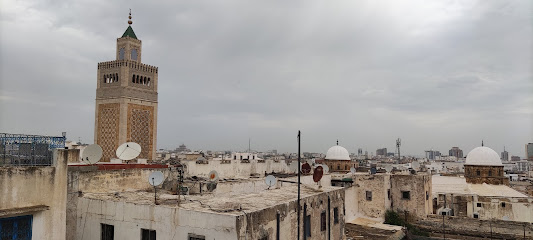
Dar Othman
Explore Dar Othman, a historical treasure in Tunis, rich in culture and artistry, perfect for tourists seeking an authentic experience.
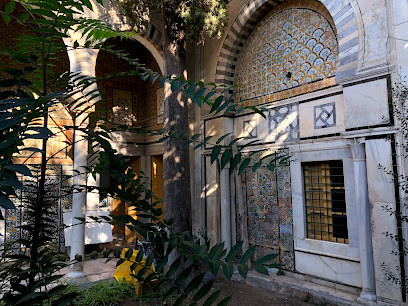
Medina di Tunisi
Discover the captivating charm of Medina di Tunisi, an open-air museum offering a glimpse into the vibrant history and culture of Tunis.
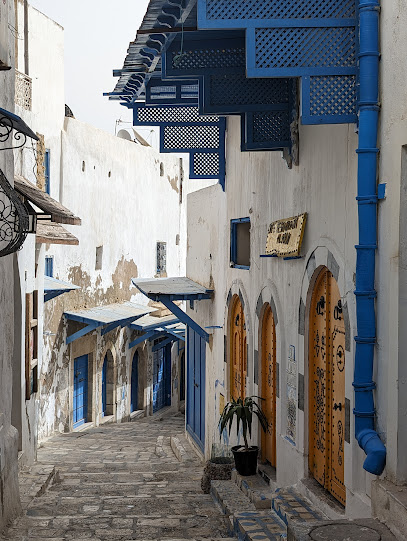
Mausoleum of Sidi Brahim Riahi
Explore the Mausoleum of Sidi Brahim Riahi, a serene historical landmark in Tunis that reflects the rich cultural heritage and spiritual significance of the region.
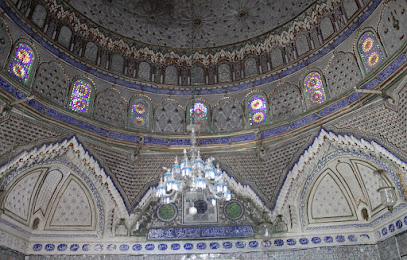
(Tunis Medina visitor center) Centre de présentation de l'histoire et des monuments de la medina de Tunis
Uncover the historical treasures of Tunis at the Medina Visitor Center, your gateway to the city's rich cultural heritage.
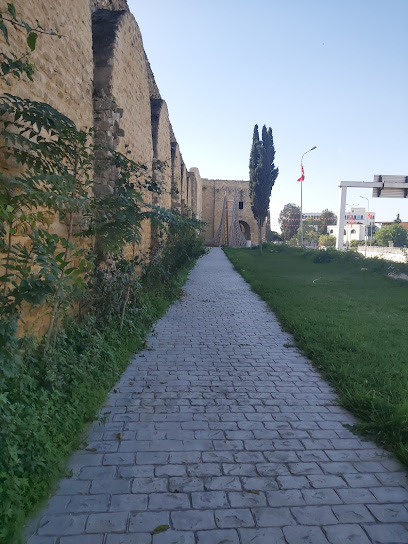
Masjid Laz
Discover the historical charm of Masjid Laz in Tunis, a captivating landmark showcasing exquisite architecture and rich cultural heritage.

Unmissable attractions to see
Bab al-Bhar
Experience the historical charm of Bab al-Bhar, a stunning gateway in Tunis that blends rich heritage with vibrant local culture.
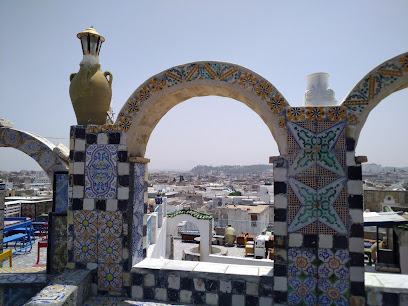
Dah Dah Happy Land Entertainment Park
Experience the excitement and joy at Dah Dah Happy Land Entertainment Park in Tunis, where adventure awaits for visitors of all ages.
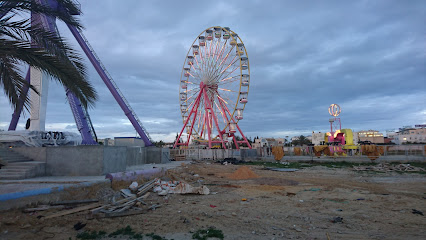
Victory Square
Discover the vibrant atmosphere and rich history of Victory Square in Tunis, a must-visit hub for culture and cuisine.
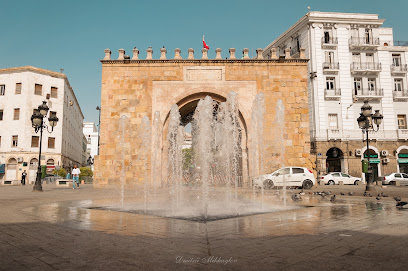
Royal Mausoleum of Tourbet el Bey
Discover the Royal Mausoleum of Tourbet el Bey, a historical gem in Tunis showcasing stunning architecture and rich cultural heritage.
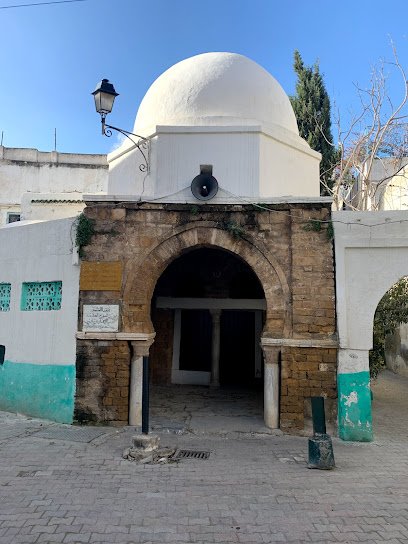
Auberge de Jeunesse
Discover the enchanting ambiance of Auberge de Jeunesse in Tunis, a vibrant hostel where tradition meets comfort for every traveler.

Tunis City Museum - متحف مدينة تونس
Explore the rich cultural heritage of Tunisia at the Tunis City Museum, where history comes alive through captivating exhibits and local artistry.
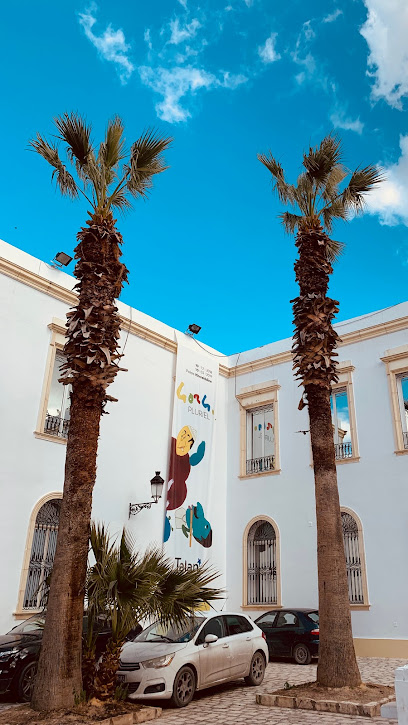
Essential places to dine
Dar El Jeld
Experience authentic Tunisian flavors at Dar El Jeld – where tradition meets culinary excellence in La Medina.
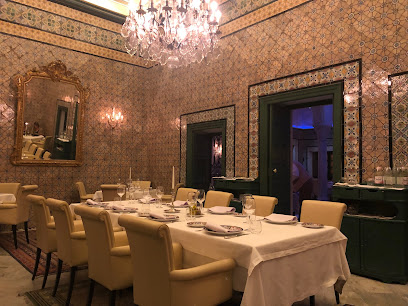
Fondouk El Attarine
Experience authentic Tunisian cuisine at Fondouk El Attarine in the heart of La Medina - a blend of rich flavors and cultural heritage.
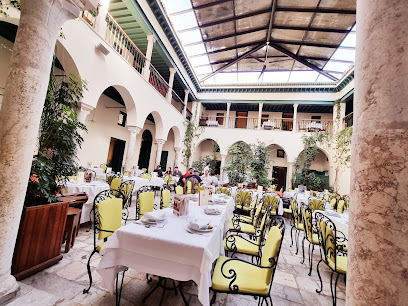
El Ali Restaurant & Cafe
Experience authentic Tunisian flavors at El Ali Restaurant & Cafe in the heart of La Medina, Tunis - a culinary delight for all visitors.
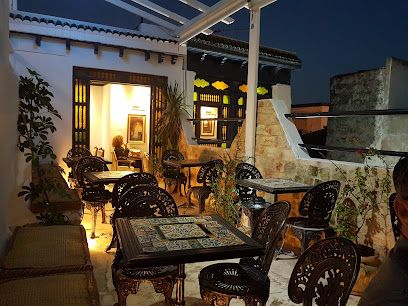
Dar Belhadj
Discover authentic Tunisian cuisine in a beautifully restored setting at Dar Belhadj, La Medina's hidden gem.
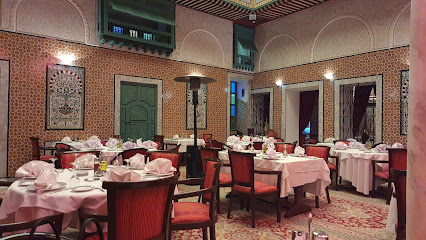
Restaurant Dar Slah
Experience the authentic taste of Tunisia at Restaurant Dar Slah, where tradition meets flavor in every dish.
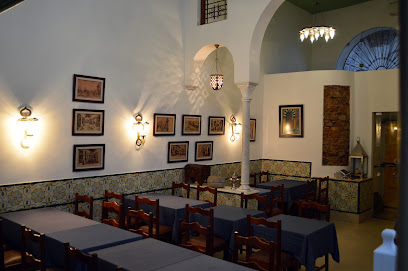
Dar Essafa
Experience authentic Tunisian flavors at Dar Essafa in La Medina—where tradition meets taste in every dish.
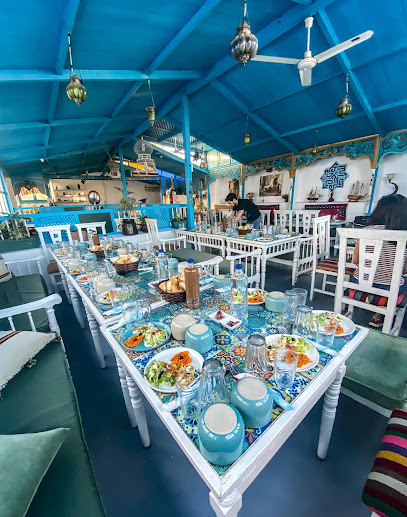
Bab Tounès
Discover the authentic flavors of Tunisia at Bab Tounès – where tradition meets taste in the heart of Tunis.
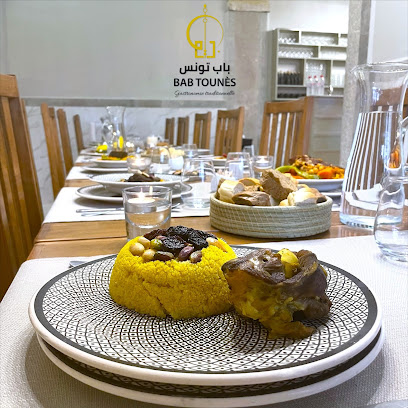
Restaurant El Abed
Experience authentic Tunisian cuisine at Restaurant El Abed in La Medina - where tradition meets flavor!
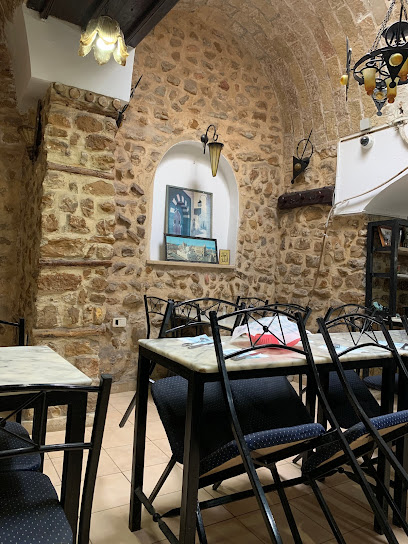
Baraka Restaurant
Experience authentic Tunisian cuisine at Baraka Restaurant in La Medina - where tradition meets flavor in every dish.

Doken
Discover authentic Tunisian flavors at Doken in La Medina – a must-visit restaurant for every food lover exploring Tunisia.
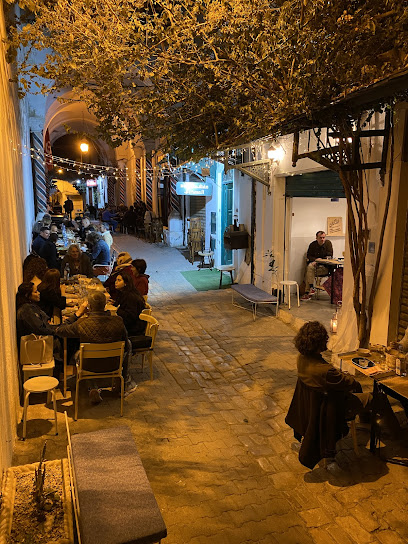
Markets, malls and hidden boutiques
Chapellerie Trudy
Explore Tunisian culture through handcrafted chechias at Chapellerie Trudy, a must-visit for tourists seeking authentic local souvenirs.
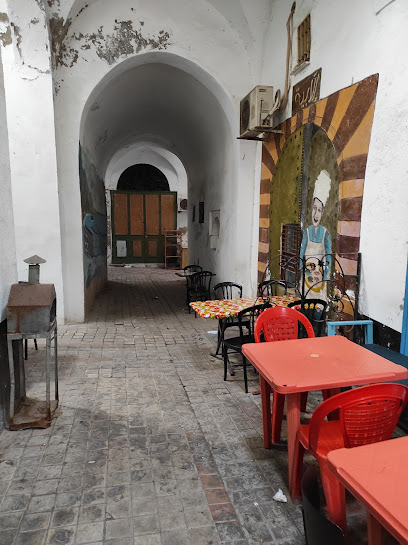
Magasin d'art et d'artisanat
Discover the enchanting world of Tunisian crafts at Magasin d'art et d'artisanat, where artistry meets tradition in every unique piece.
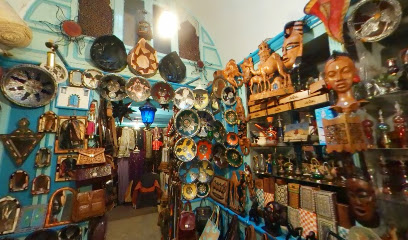
dar el farh
Explore Dar El Farh in La Medina for exquisite Tunisian crafts and unique souvenirs that capture the essence of Tunisia's rich heritage.
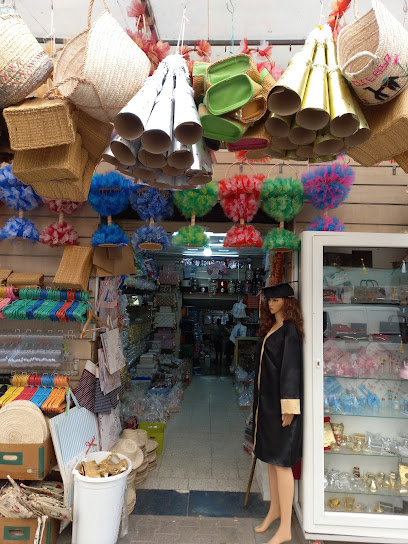
Wood Products Gift Shop
Explore the Wood Products Gift Shop in La Medina, Tunis, for exquisite handcrafted wooden souvenirs that capture the essence of Tunisian artistry.
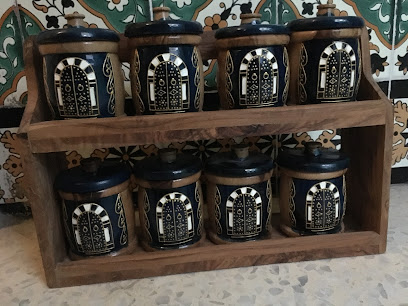
Magasin cuivre mehdi
Explore the rich artistry of Tunisia at Magasin Cuivre Mehdi, the premier gift shop for handcrafted copper treasures in the heart of Tunis.

MEDINA STORE
Explore the enchanting world of Tunisian fragrances and unique finds at the Medina Store, a charming perfume outlet in El Halfaouine.

Brave
Explore Brave in Tunis for unique Tunisian gifts and immerse yourself in local craftsmanship and culture.
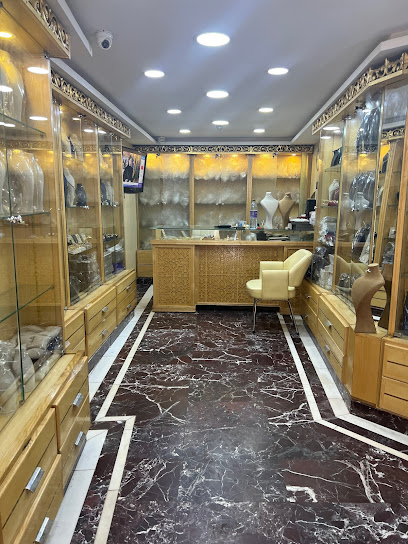
Easy Shopping
Explore Easy Shopping in Tunis for unique fashion accessories that celebrate Tunisian craftsmanship and vibrant style.

Boutique de peinture et aloevera
Explore a charming gift shop in La Medina, Tunis, featuring unique handcrafted art and aloe vera products that embody local craftsmanship.
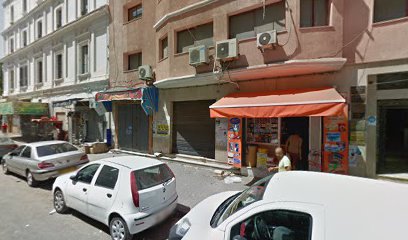
Sbabet
Explore Sbabet, a captivating gift shop in La Medina, Tunis, offering authentic Tunisian handicrafts and unique souvenirs.

Essential bars & hidden hideouts
Bar L'Avenue
Discover the vibrant ambiance and local flavors at Bar L'Avenue, the perfect bar in Tunis for relaxation and cultural immersion.
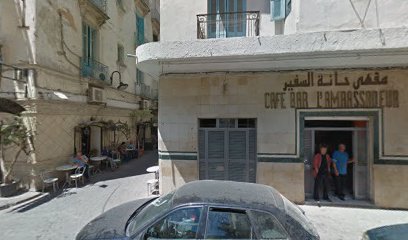
Bar El Mestiri
Experience the charm of Tunis at Bar El Mestiri, where vibrant culture meets refreshing drinks in a cozy atmosphere.
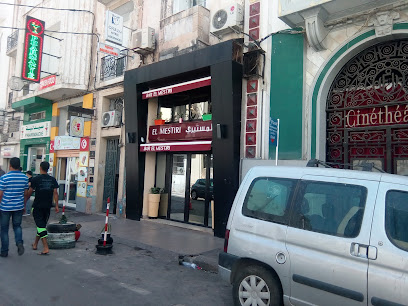
Café Bar MARIUS
Discover the charm of Café Bar MARIUS in Tunis, where local culture meets a cozy atmosphere, perfect for relaxing after your city adventures.

Le Vieux Port
Experience the vibrant nightlife at Le Vieux Port, a lively bar in the heart of Tunis offering local drinks and a welcoming atmosphere.
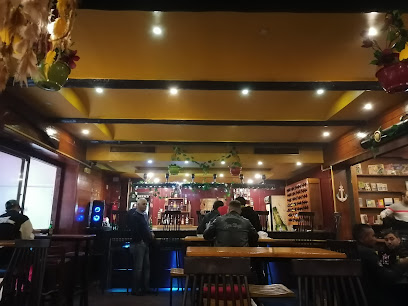
Bar le Palace
Discover the vibrant nightlife of Tunis at Bar le Palace, where local culture meets a lively atmosphere for an unforgettable experience.
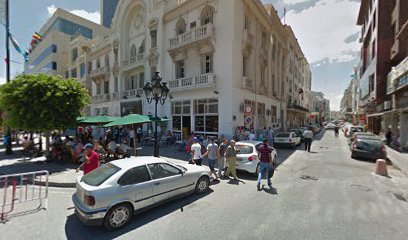
Bar celone
Experience the vibrant nightlife at Bar Celone in Tunis, where local flavors and lively atmosphere create unforgettable moments.
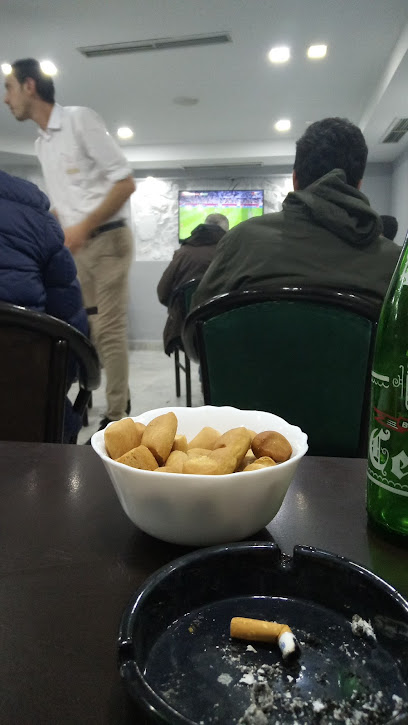
1900 | Speakeasy
Discover the vintage allure of 1900 | Speakeasy in Tunis, a bar where expertly crafted cocktails meet an enchanting atmosphere.
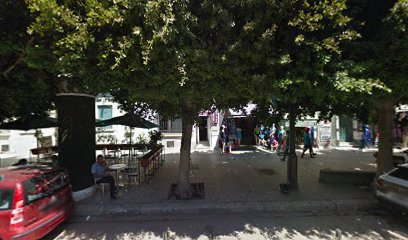
Café Bar de la Lyre
Discover the delightful ambiance of Café Bar de la Lyre in Tunis, where local culture meets refreshing drinks in a cozy setting.
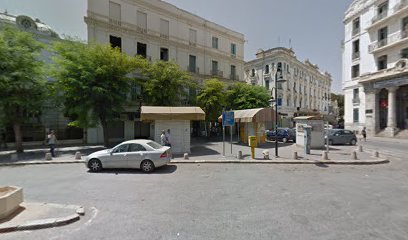
نهج التنسنيس او الطحين
Experience the vibrant spirit of Tunis at نهج التنسنيس او الطحين, a beloved bar in the heart of La Medina, perfect for unwinding after a day of exploration.

Bar la Parisienne
Experience the vibrant nightlife of Tunis at Bar la Parisienne, where culture, music, and delicious drinks come together.
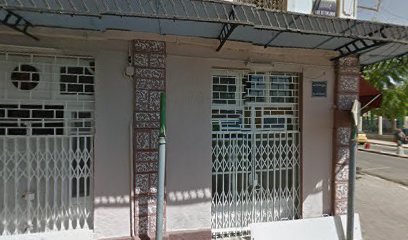
Local Phrases
-
- Helloمرحبا
[marhaba] - Goodbyeوداعا
[wada'an] - Yesنعم
[naam] - Noلا
[laa] - Please/You're welcomeمن فضلك
[min fadlik] - Thank youشكرا
[shukran] - Excuse me/Sorryعذرا
[aadhra] - How are you?كيف حالك؟
[kayfa halak?] - Fine. And you?بخير. وأنت؟
[bukhayr. wa ant?] - Do you speak English?هل تتحدث الإنجليزية؟
[hal tatahadath al-inglizia?] - I don't understandلا أفهم
[la afham]
- Helloمرحبا
-
- I'd like to see the menu, pleaseأريد أن أرى القائمة، من فضلك
[uriidu an ara alqaimah, min fadlik] - I don't eat meatأنا لا آكل اللحم
[ana la akul allahm] - Cheers!صحتين!
[sahatayn!] - I would like to pay, pleaseأريد أن أدفع، من فضلك
[uriidu an adfaa, min fadlik]
- I'd like to see the menu, pleaseأريد أن أرى القائمة، من فضلك
-
- Help!النجدة!
[alnajdah!] - Go away!انصرف!
[ansarif!] - Call the Police!اتصل بالشرطة!
[atassil bialshurta!] - Call a doctor!اتصل بطبيب!
[atassil bitabib!] - I'm lostلقد ضللت الطريق
[laqad dalalt altariq] - I'm illأنا مريض
[ana mareed]
- Help!النجدة!
-
- I'd like to buy...أريد أن أشتري...
[uriidu an ashtari...] - I'm just lookingأنا فقط أتفرج
[ana faqat atfarij] - How much is it?بكم هذا؟
[bi kam hadha?] - That's too expensiveهذا غالي جدا
[hadha ghali jiddan] - Can you lower the price?هل يمكنك خفض السعر؟
[hal yumkinuka khafd alsu'r?]
- I'd like to buy...أريد أن أشتري...
-
- What time is it?كم الساعة؟
[kam alsaa'ah?] - It's one o'clockالساعة الواحدة
[alsaa'ah alwahidah] - Half past (10)الساعة العاشرة والنصف
[alsaa'ah al'ashirah walnisf] - Morningالصباح
[alsabah] - Afternoonالمساء
[almasa'] - Eveningالمساء
[almasa'] - Yesterdayأمس
[ams] - Todayاليوم
[alyawm] - Tomorrowغدا
[ghadan] - 1واحد
[wahid] - 2اثنان
[ithnan] - 3ثلاثة
[thalathah] - 4أربعة
[arba'ah] - 5خمسة
[khamsah] - 6ستة
[sittah] - 7سبعة
[sab'ah] - 8ثمانية
[thamania] - 9تسعة
[tis'ah] - 10عشرة
[asharah]
- What time is it?كم الساعة؟
-
- Where's a/the...?أين...؟
[ayn...?] - What's the address?ما هو العنوان؟
[ma huwa al'anaan?] - Can you show me (on the map)?هل يمكنك أن تريني (على الخريطة)؟
[hal yumkinuka an tarini (ala alkhareetah)?] - When's the next (bus)?متى يأتي الحافلة التالية؟
[mata yaati alhafilat altaaliyah?] - A ticket (to ....)تذكرة (إلى...)
[tadhkirah (ila...)]
- Where's a/the...?أين...؟
History of Medina of Tunis
-
The Medina of Tunis, established in the 7th century, reflects the city’s Islamic heritage, with its layout and architecture influenced by the Arab conquest. The neighborhood was designed around the principles of Islamic urban planning and housed a diverse population, including Berbers, Arabs, and later, various Mediterranean cultures.
-
During the 12th and 13th centuries, the Medina flourished under the Almohad and Hafsid dynasties, becoming a center of trade and scholarship. The construction of significant monuments such as the Zaytuna Mosque in the 8th century and numerous madrasas established the Medina as a hub for religious and educational activities in the region.
-
The 16th century saw the onset of Ottoman rule, which introduced new architectural styles and urban features to the Medina. The Ottomans invested in the construction of palaces, mosques, and fountains, leading to a period of cultural enrichment, as the Medina became an essential part of the Ottoman Empire in North Africa.
-
In the late 19th and early 20th centuries, Tunisia fell under French protectorate rule. This period brought significant changes to the Medina, including modernization efforts that impacted traditional lifestyles. While some areas were developed, a portion of the Medina remained untouched, preserving its unique character and charm.
-
In 1979, the Medina of Tunis was designated a UNESCO World Heritage Site, recognizing its historical significance and architectural integrity. Ongoing restoration efforts aim to preserve its rich heritage while promoting tourism. The Medina's vibrant souks, traditional crafts, and cultural festivals continue to attract visitors, showcasing the resilience of Tunisian culture.
Medina of Tunis Essentials
-
The Medina of Tunis is centrally located in the city and can be easily reached from other neighborhoods. From the Tunis-Carthage International Airport, you can take a taxi or a ride-sharing service directly to the Medina, which takes about 20-30 minutes. Alternatively, you can take the TGM train from Carthage to the Tunis station and then a short taxi ride to the Medina. Public buses also connect various neighborhoods to the Medina, with several stops along Avenue Habib Bourguiba.
-
The Medina is a pedestrian-friendly area, and many of its attractions are within walking distance. Due to its narrow streets, bicycles and cars are not recommended for navigating the Medina. Local taxis are available for trips outside the Medina. The public bus system in Tunis can also be used to access nearby neighborhoods, though be prepared for some time spent waiting. Consider wearing comfortable shoes for exploring the souks and historic sites.
-
The Medina of Tunis is generally safe for tourists, but standard precautions should be taken. Petty crime, such as pickpocketing, can occur in crowded areas and markets. Avoid walking alone at night in less populated areas, especially near the edges of the Medina. Areas like the outskirts of the Medina can have higher crime rates, so it's best to stay vigilant and travel in groups when possible.
-
In case of an emergency, dial 197 for police assistance and 190 for ambulance services. Ensure you have travel insurance that includes medical coverage. The nearest hospital is the Charles Nicolle Hospital, located a short taxi ride away from the Medina. In case of minor health issues, look for pharmacies within the Medina, as many are open late.
-
Fashion: Do dress modestly, covering shoulders and knees, especially when visiting mosques. Avoid wearing revealing clothing. Religion: Do respect local customs; always remove shoes before entering a mosque. Public Transport: Do be courteous and offer your seat to elderly passengers. Don’t eat or drink on public transport. Greetings: Do greet locals with a friendly 'Salam' (hello) and a handshake. Eating & Drinking: Do try local dishes such as couscous and tajine. Don’t refuse food or drink offered by locals, as it is considered impolite.
-
To experience the Medina like a local, visit the traditional souks, particularly the Souk des Tapis for exquisite carpets and the Souk des Ébénistes for handcrafted woodwork. Take time to enjoy a mint tea at a local café, and engage with shopkeepers to learn about their crafts. Don't forget to explore hidden gems like the beautiful courtyard of the Dar Hussein and the historic Zitouna Mosque. For a taste of local life, join a cooking class or a guided food tour.
-
Understanding local customs will enhance your experience in the Medina. Always greet people politely and with a smile. When visiting religious sites, maintain a respectful demeanor and follow any specific rules regarding photography. It is customary to negotiate prices in markets, but do so with a friendly attitude. Respect local dining customs by waiting for the host to invite you to eat and by using your right hand for eating, as the left is considered impolite.
-
When shopping in the Medina, haggling is expected and part of the experience. Start by offering about half of the initial price and negotiate from there. It's advisable to check the quality of items, especially in souks. Be cautious of overly aggressive sales tactics; a polite 'no' will usually suffice. Consider purchasing local handicrafts, such as ceramics and textiles, as they make for unique souvenirs.
Trending Landmarks in Medina of Tunis
Nearby Cities to Medina of Tunis
-
Things To Do in Bizerte
-
Things To Do in Hammamet
-
Things To Do in Sousse
-
Things To Do in Monastir
-
Things To Do in Annaba
-
Things To Do in Sfax
-
Things To Do in Palermo
-
Things To Do in Constantine
-
Things To Do in Djerba
-
Things To Do in Tozeur
-
Things To Do in Xlendi
-
Things To Do in Marsalforn
-
Things To Do in Gozo
-
Things To Do in Xaghra
-
Things To Do in Xewkija

